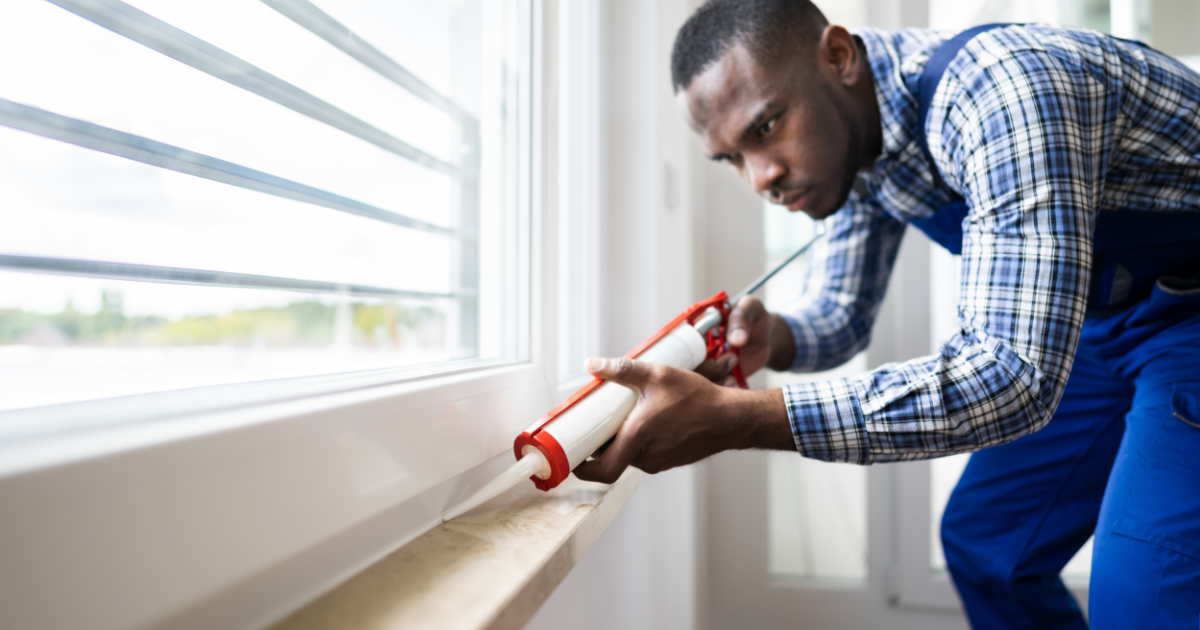Most people don’t spend a lot of time thinking about sealants, but they are used in every home, school, and workplace. And while you may not have noticed them in your day-to-day life, they can negatively impact indoor air quality and human health.
Sealants are used in building construction to close gaps and regulate airflow, which is important especially in the age of our climate crisis. Unfortunately, despite their widespread use, sealants often contain harmful chemicals such as isocyanates and phthalates. These chemicals are semi-volatile and sealants may off-gas these chemicals, contaminating indoor air and household dust.
Phthalates disrupt hormone function and are linked to reproductive harm. Some phthalates have been banned in children’s products including in states like Washington, California, and Vermont and at the federal level, but kids and pregnant women are exposed from many sources—including building products like sealants.
Right now the Washington Department of Ecology is proposing a rule banning phthalates in vinyl flooring and fragrances in personal care products. Studies have documented that indoor air and household dust are significant routes of exposure to phthalates.
Recognizing the harmful effects of phthalates and the important role that building materials play in exposing people to these toxic chemicals, Toxic-Free Future partnered with Healthy Building Network and the Ecology Center of Michigan in 2021 and 2022 to test sealants for phthalates. This builds on past work we did with the Ecology Center and other partners to drive phthalates out of vinyl flooring sold at retail and supports rules in Washington.
In this new investigation, we purchased and tested 33 sealant products, including polyurethane, silicone, and acrylic latex sealants, commonly used in building or renovation and potentially containing phthalates. Ecology Center staff used an instrument called a Fourier-transform infrared (FTIR) spectrometer to screen for phthalates, and commissioned additional laboratory testing of the products that tested positive.
The testing found that six of the 33 tested sealants contained high levels of phthalates—up to 12% by weight—containing both diisononyl phthalate (DINP) and diisodecyl phthalate (DIDP). Interestingly, we found phthalates were most prevalent in “silane modified polymer” sealants. Five of the seven silane modified polymer sealants tested positive for phthalates. Across the board, while six sealants contained concerning levels of phthalates, none were detected in the remaining 27 products, suggesting alternatives are available.
Many sealant makers have already moved away from using phthalates, and it is important that sealants be manufactured without the use of harmful chemicals. Safer alternatives to phthalate-containing sealants exist, such as sodium silicate caulk and pre-compressed polyurethane joint seal.
The big picture: healthy buildings are made with healthy materials
Building materials made of dangerous toxics extend far beyond sealants
Sealants are just one example of building materials with toxic ingredients that contribute to poor air quality and health risks. Other building materials, from paint and flooring to insulation, frequently contain chemicals that may harm our health. In each case, there are safer alternatives available.
Affordable housing residents are especially impacted by toxic chemicals in building materials
Research has found that we don’t share the burden of toxic building materials equally. People living in affordable housing are disproportionately exposed. Affordable housing units were often constructed using cheaper building materials. This has led to toxic chemicals in those materials harming the health of residents.
Beyond their greater exposure through their housing, residents of affordable housing also tend to be more vulnerable to toxic exposures. In a report on the high number of affordable housing facilities near Superfund sites, the Shriver Center on Poverty Law states that “the five million total families who live in federally assisted housing are predominately comprised of the people most vulnerable to exposure to environmental toxins.” This includes high percentages of children, people with disabilities, older adults, and Black and Latine people.
Toxic building materials have a lasting impact, particularly in affordable housing. For example, while lead paint was banned in 1978, it’s still hurting children living in affordable housing today. More than 90,000 children who live in housing through the Housing Choice Voucher program (section 8) have lead poisoning, which permanently harms brain development.
The time is now for policies that make healthier building materials the standard!
Building materials must be made toxic-free to ensure the health and safety of people. Organizations like Enterprise Green Communities and Healthy Building Network, as well as state programs like Safer Products for Washington, have led the movement towards safer building materials. Enterprise Green Communities advocates for healthy building materials in affordable housing developments and has recognized several toxics in building materials, including phthalates in sealants, as a health issue. The organization has developed criteria for affordable housing developments that builders nationwide can meet to gain points toward accreditation by using safer materials. Healthy Building Network also advocates for eliminating toxic chemicals in building materials, and has done extensive research on chemical hazards and safer ingredients. Their HomeFree Product Guidance ranks building materials from red to green based on how hazardous their contents are and suggests safer alternatives, providing a valuable resource anyone can use to identify healthier building materials.
Within Washington state, Toxic-Free Future has advocated for strong restrictions but the Department of Commerce has fallen short when it comes to protecting people living in affordable housing with its version of the Enterprise standards. Programs like Safer Products for Washington (SPW) are also taking action on toxics like phthalates in building materials. Every five years, Washington’s Department of Ecology regulates a set of toxic chemicals and bans or limits their levels in consumer products. This groundbreaking program protects people and the environment from toxic pollution by regulating thousands of chemicals and the products they can be found in. Ecology began with restricting phthalates in vinyl flooring, but the agency needs to expand phthalate restrictions to make sure building materials are free of harmful chemicals. Given that phthalates were detected in our sealant testing, Ecology should ban phthalates in sealants in the next round of regulations.
Home improvement chains should ban phthalates and other toxic chemicals in sealants
Our new testing underscores the need for home improvement chains such as The Home Depot and Lowe’s to ban ortho-phthalates and other toxic chemicals in sealants. Both The Home Depot and Lowe’s have already shown leadership in eliminating phthalates in vinyl flooring. They should build on those successes and also drive phthalates out of sealants and other building products, which, like flooring, can also contaminate our indoor environment. These retailers should also ensure the substitutes are verifiably safer, meeting GreenScreen Benchmark 2 or ChemFORWARD C criteria or higher.
Everyone deserves healthy places to live and work. Now is the time to build on national criteria, like Enterprise Green Communities, so that affordable housing is safe and healthy for residents. Retailers like The Home Depot and Lowe’s have already eliminated phthalates in vinyl flooring, showing that safer alternatives are available, and they should continue to ban toxics in other products. And in Washington State, the Department of Ecology should use the Safer Products for Washington program to ban toxic chemicals in building materials.
Sources:
- Home Free: https://homefree.healthybuilding.net/products/55-sealant-hazard-spectrum
- (TFF Comments: https://toxicfreefuture.org/wp-content/uploads/2021/02/TFF-HBN-NRDC-comments.pdf)
- Enterprise: https://www.greencommunitiesonline.org/introduction
- Pew Trust: https://www.pewtrusts.org/en/research-and-analysis/blogs/stateline/2019/12/17/hud-spends-millions-on-lead-abatement-why-are-public-housing-authorities-still-struggling
- Shriver Center on Poverty Law: https://www.povertylaw.org/wp-content/uploads/2020/06/environmental_justice_report_final-rev2.pdf






